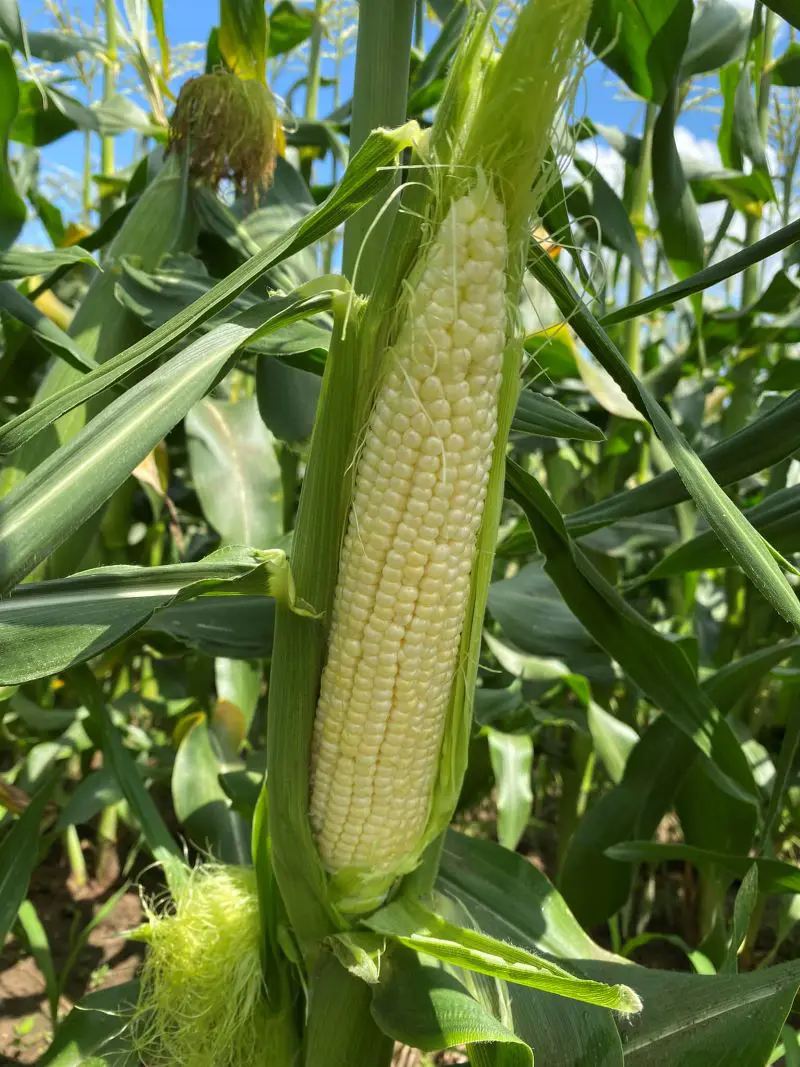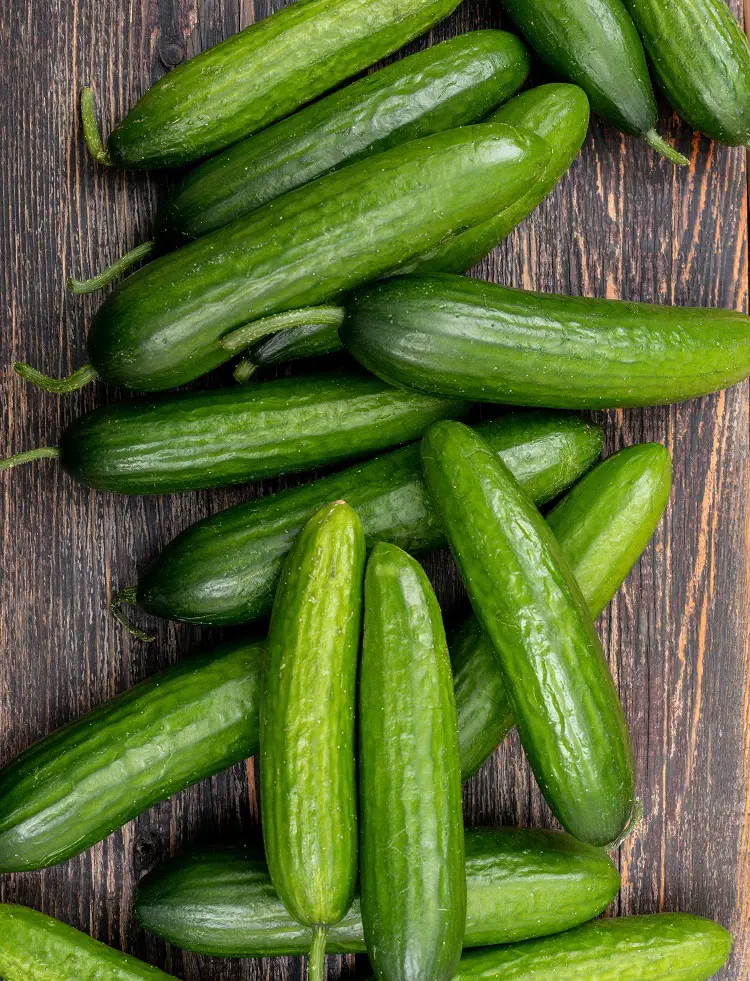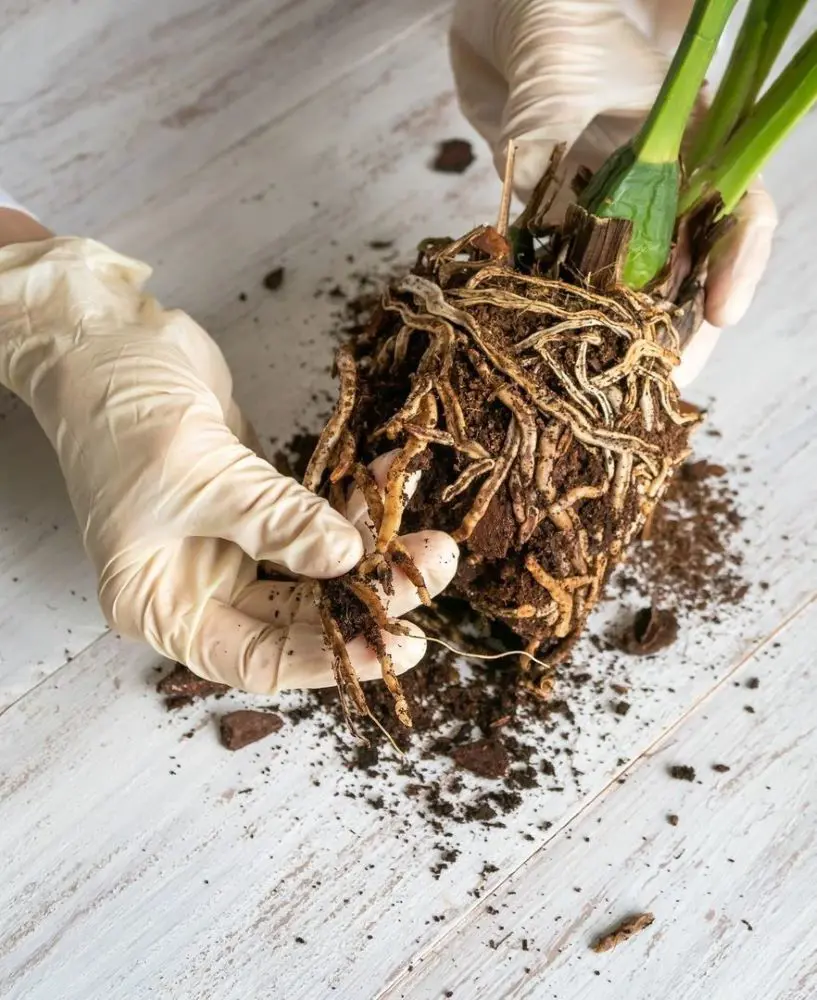15 Tips To Grow Okra In Your Garden
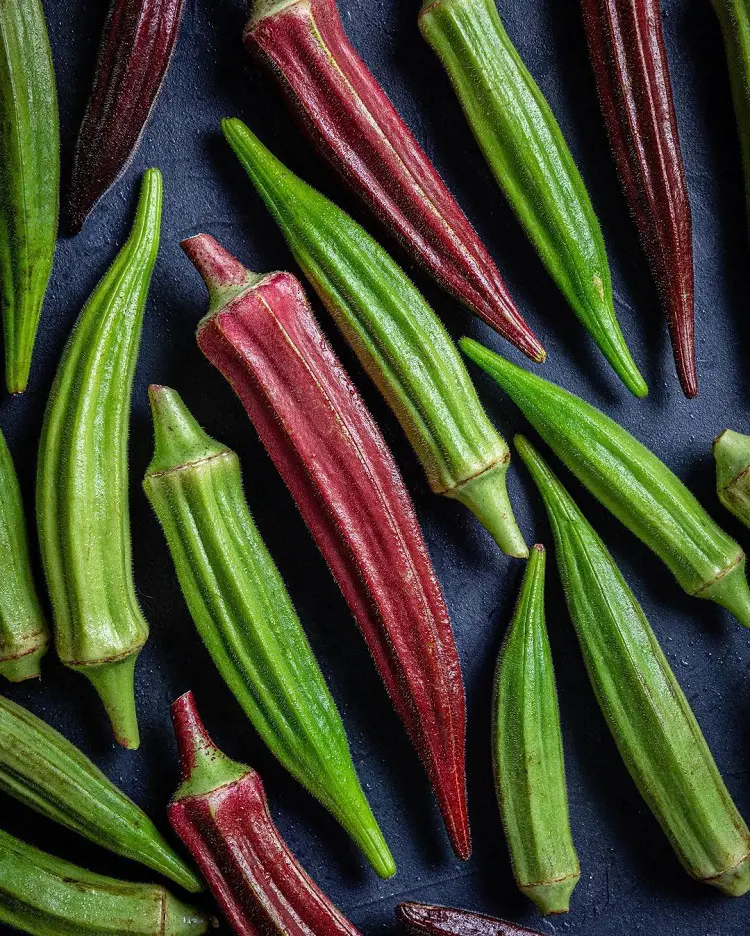
This post may contain affiliate links. If you make a purchase through links on our site, we may earn a commission.
Planting okra is a rewarding task to do if you are a gardener, and these 15 tips ensure a great harvest. Choose the right type, time it well, and maintain favorable conditions for optimal growth. Whether you're a pro or a gardening enthusiast, this guide covers everything from soil prep to pest control.
Expect not just a beautiful garden addition, but also delicious, homegrown goodness on your table. With insights on timing, varieties, and care, get ready for a successful okra patch, making your gardening journey both enjoyable and fruitful.
1. Choose The Right Variety
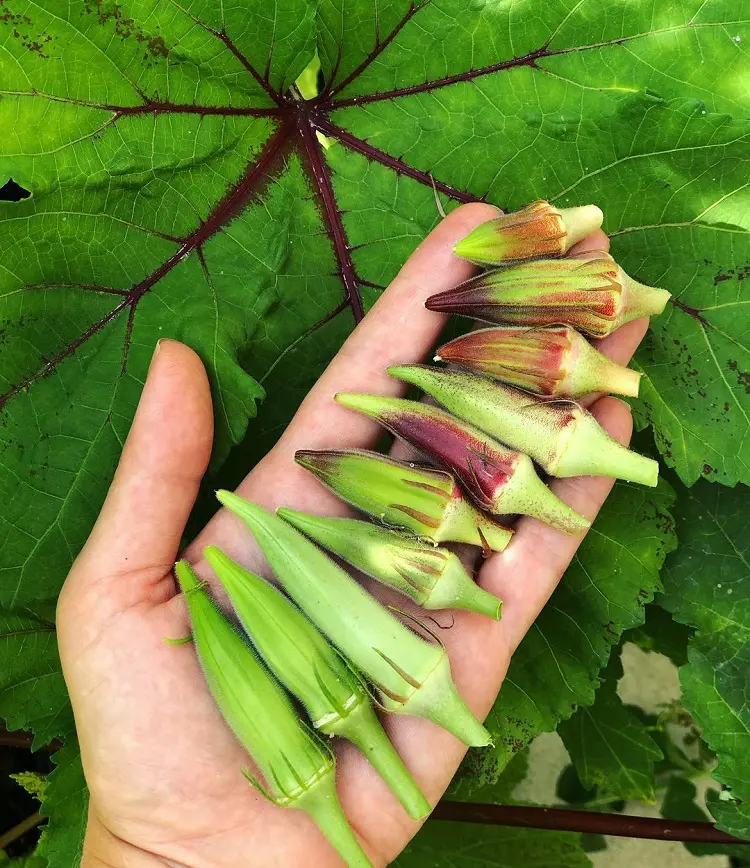
Selecting the right variety of okra is crucial for successful growth because different varieties thrive in specific climates and conditions. Factors like temperature, sunlight, and soil type significantly impact okra cultivation. For example, 'Blondy' suits northern climates, while 'Louisiana Green Velvet' is ideal for larger areas.
Choosing a variety suited to your region ensures optimal growth, better resistance to local pests and diseases, and ultimately, a more successful harvest. Each variety has its unique characteristics, and aligning those with your local environment enhances the chances of cultivating health.
2. Sunshine Lover
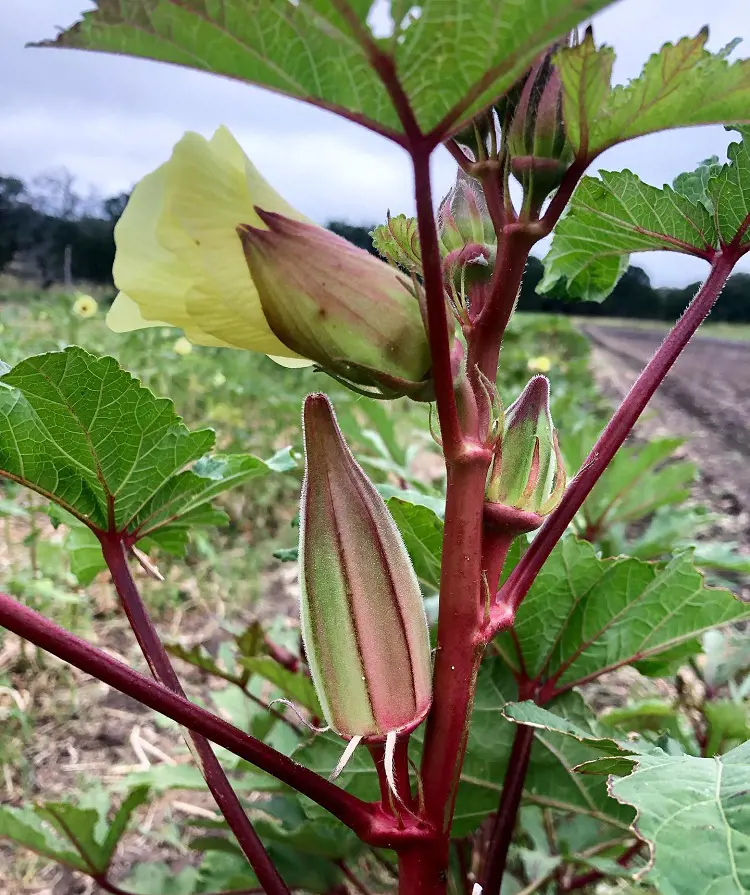
Planting okra in a location with ample sunlight is crucial for its successful growth. Okra thrives in full sun, requiring at least 6-8 hours of sunlight daily. Sunlight is essential for photosynthesis, the process through which plants convert light into energy, promoting robust growth and the development of healthy pods.
Adequate sunlight not only ensures optimal plant metabolism but also enhances the plant's ability to produce ample flowers, which later transform into the fiber-rich okra vegetable. Insufficient sunlight can lead to stunted growth, poor fruiting, and overall diminished yield in okra plants.
3. Well-Drained Soil
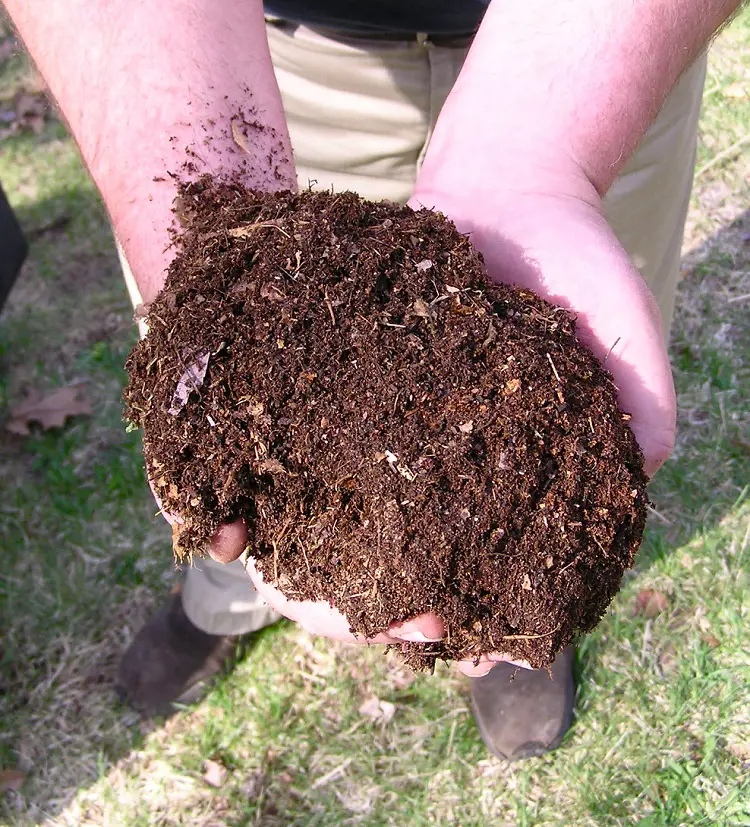
Well-drained soil ensures that water doesn't accumulate around the roots, preventing issues like root rot and other water-related diseases. If the soil conditions are poor and not well-drained, it can significantly hamper the growth of okra.
Waterlogged soil can lead to root suffocation, nutrient deficiencies, and increased susceptibility to diseases. The lack of proper drainage can stunt the growth of okra plants, and reduce their overall growth. Therefore, learning about different soil types and ensuring well-drained soil is essential for the successful cultivation and thriving growth of okra.
4. Acidic Soil pH
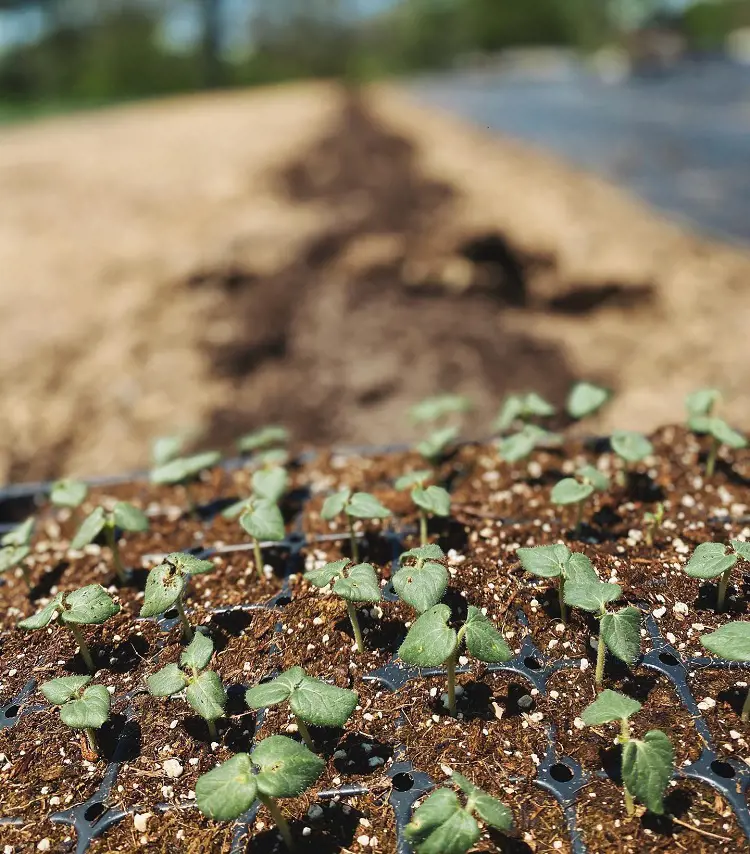
Maintaining slightly acidic soil conditions is vital for fostering healthy okra plants. Okra thrives when the soil pH ranges between 6.0 and 7.0. In slightly acidic environments, essential nutrients become more accessible to the plant roots, promoting robust growth and development.
This optimal pH range enhances nutrient uptake, particularly for crucial elements like phosphorus and iron. Additionally, acidic conditions discourage the occurrence of nutrient imbalances that may impede okra's overall health. By carefully managing soil pH, gardeners can create an environment that maximizes the potential of okra plants.
5. Timing Is Key
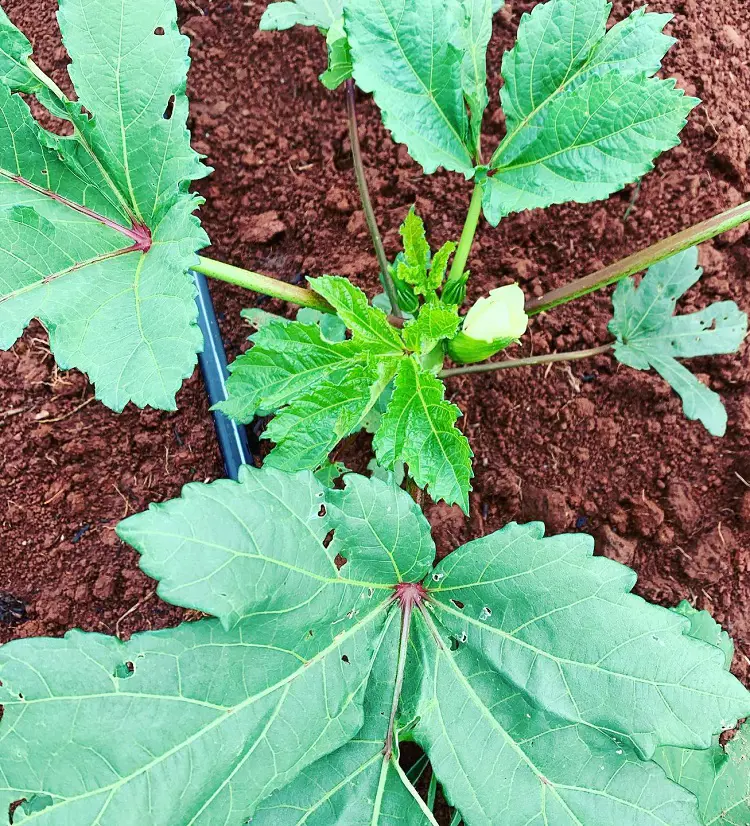
It's best to sow okra seeds or transplant seedlings into the garden after the last frost date when the soil has warmed up. Okra is sensitive to cold temperatures, and exposure to frost can stunt its growth or damage young plants.
Planting in warmer conditions encourages faster germination and robust early growth. This ensures that the okra plants have an optimal environment for development, leading to healthier plants and a more successful crop. Adequate warmth from the soil supports the establishment of a strong root system, setting the stage for a productive growing season.
6. Spacing Matters
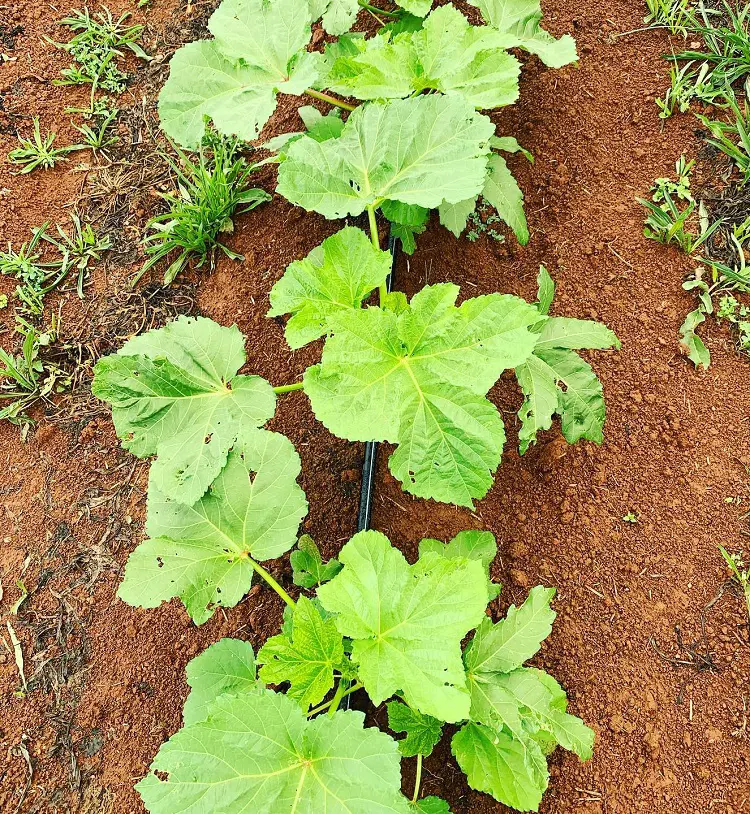
Allocating sufficient space, typically 12-18 inches apart, prevents overcrowding among okra plants. This spacing allows each plant to receive proper sunlight, air, and nutrients without competition. Adequate air circulation reduces the risk of fungal diseases by minimizing moisture retention around the foliage.
Furthermore, individual plants have ample room for lateral growth, fostering robust development and optimizing yield potential. Efficient spacing also facilitates easier weed control and makes it simpler to harvest mature pods. In essence, providing the right spacing ensures that each okra plant thrives independently.
7. Regular Watering
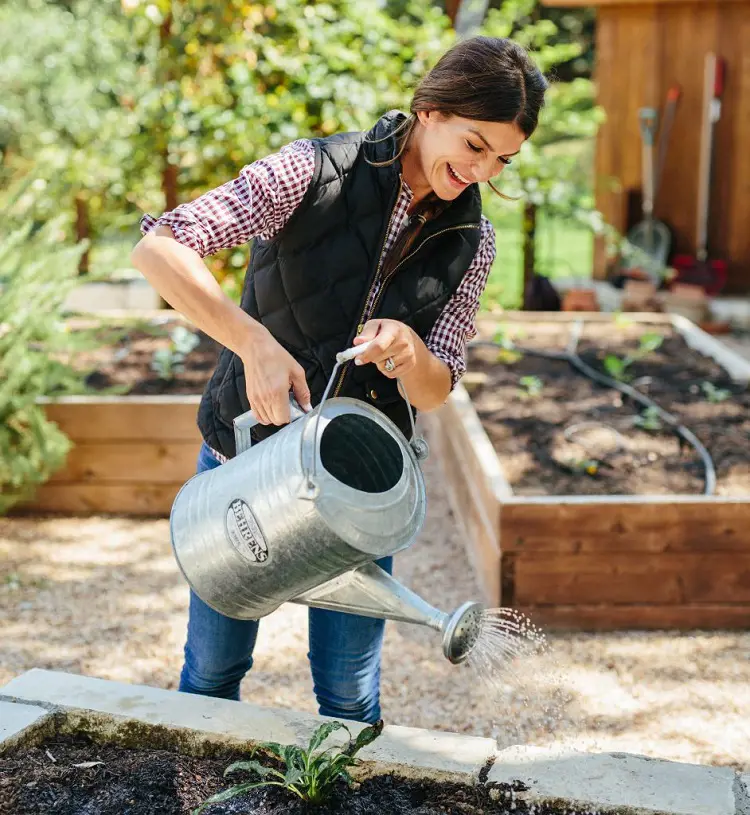
Okra plants benefit from regular watering due to their preference for a consistently moist environment. Adequate moisture is crucial for germination, seedling establishment, and overall plant growth.
During dry spells, consistent watering helps prevent stress on the plants, ensuring they can focus on robust development and fruit production rather than survival. Well-hydrated okra plants are more resilient to heat stress and less susceptible to issues like blossom end rot. Regular watering also supports the formation of succulent and tender okra pods, contributing to a healthy and productive harvest.
8. Mulching Magic
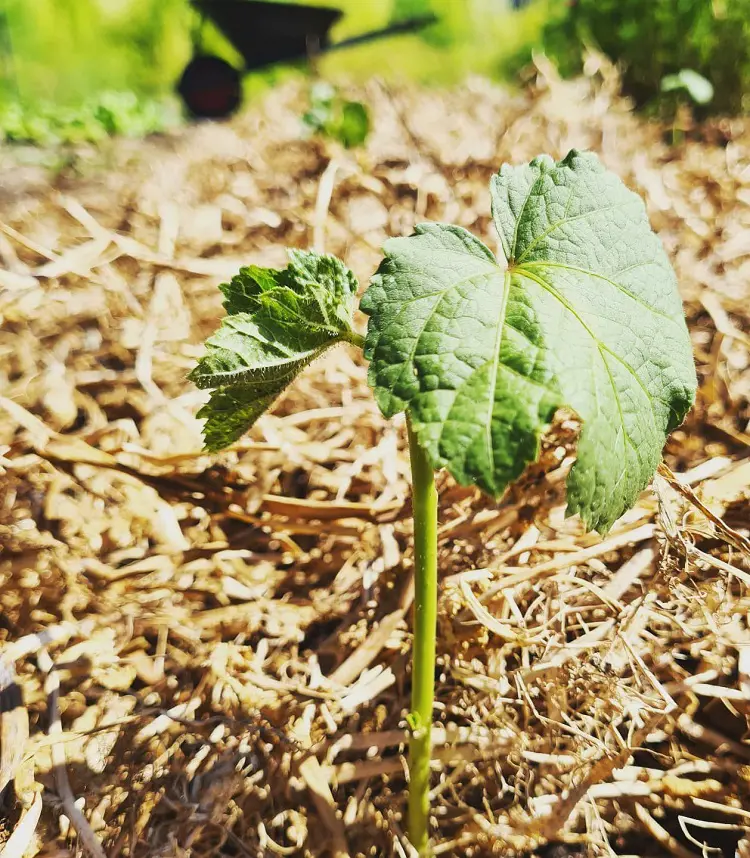
Mulching around the base of okra plants works like magic for several reasons. Firstly, it serves as a moisture-retaining barrier, reducing evaporation and helping the soil maintain a consistent level of moisture. This is particularly beneficial during hot or dry periods when the soil is prone to drying out.
Secondly, mulch acts as a weed suppressor, preventing unwanted weeds from competing with the okra for nutrients and water. By minimizing weed growth, the okra plants can utilize resources more efficiently. Additionally, mulch regulates soil temperature, keeping it cooler in hot weather and warmer during cooler periods.
9. Fertilize Wisely

Before planting, incorporate a balanced fertilizer or enrich the soil with compost. This provides essential nutrients for the plants to thrive. However, caution is needed with nitrogen levels; excessive nitrogen can hinder okra fruit production.
While nitrogen promotes leafy growth, an imbalance can divert energy away from fruiting. It's important to strike a balance, ensuring sufficient nitrogen for healthy plant development without negatively impacting the formation of okra pods. Careful fertilization supports a harmonious nutrient profile, fostering robust plants and maximizing the yield of these nutritious and flavorful vegetables.
10. Support If Needed
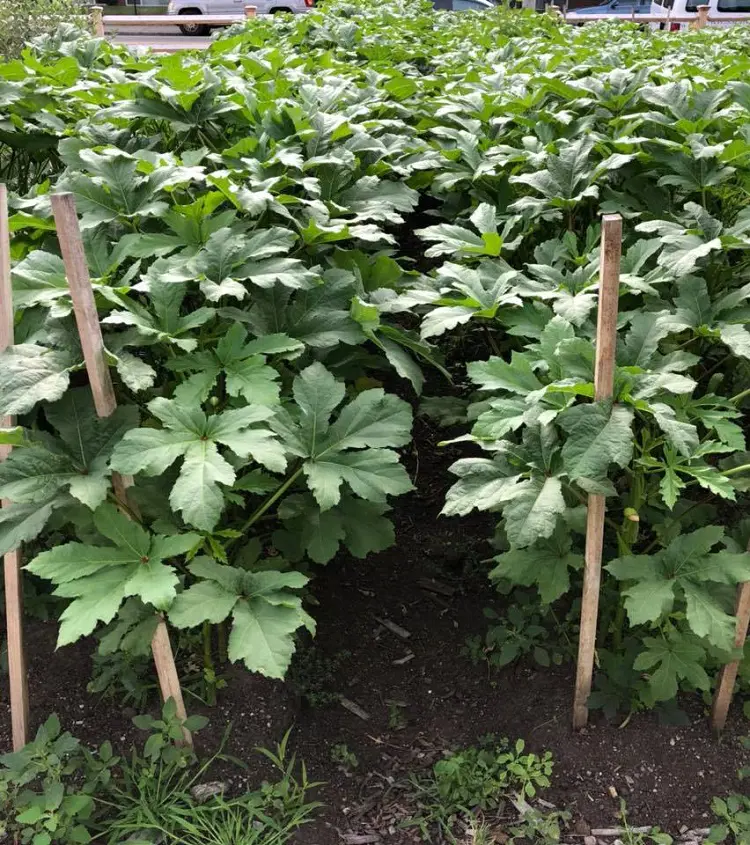
While okra is typically sturdy and doesn't demand staking, offering support to taller varieties can be beneficial, especially in windy conditions. Taller okra plants may be susceptible to bending or breaking when exposed to strong winds. Providing support, such as stakes or cages, helps maintain the plant's upright structure, preventing potential damage.
This ensures that the okra plants can continue growing vertically without the risk of structural compromise. While not universally necessary, offering support becomes a proactive measure to safeguard the plants and optimize their growth.
11. Watch For Pests
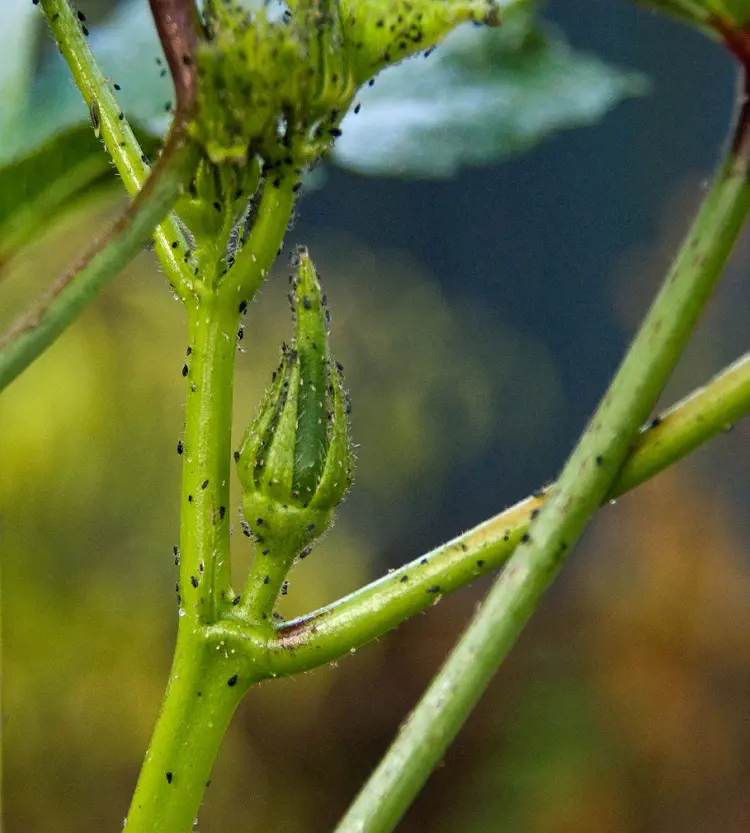
It's super important to keep an eye out for bugs when growing okra. Nasty critters like aphids and spider mites can harm the plants and make them give fewer okras. Catching these pests early is key, so you can stop them in their tracks.
You have some choices for dealing with them: use natural stuff like helpful bugs or neem oil, which works well and is good for the environment. If things get really bad, you might need to use chemicals, but be careful to not hurt the environment too much. By regularly checking and taking quick action, you make sure your okra plants stay strong.
12. Harvest Promptly
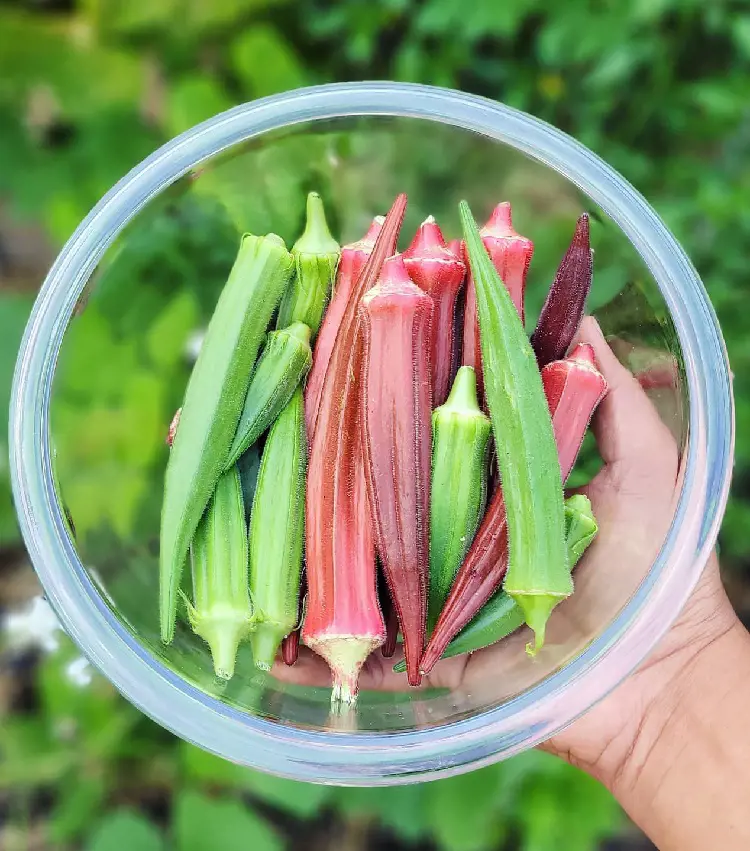
When it's time to pick okra, aim for pods that are 2-3 inches long because they taste the best and are tender. Keep a close eye on your plants because okra can grow pretty quickly. Regularly check them, and when you see the pods are the right size, harvest them promptly.
This ensures you get the most delicious and tender okras. Don't wait too long, or they might become tough. By keeping a watchful eye and picking them at the right size, you'll enjoy the best flavor and texture from your okra harvest.
13. Don't Forget Pruning
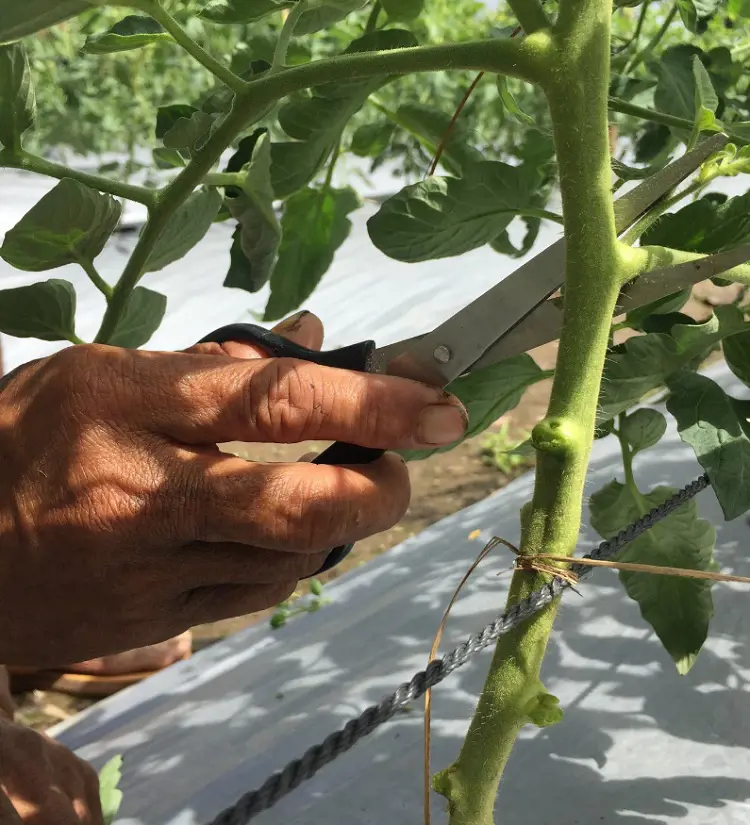
Don't forget to give your okra plants a little haircut! Trim the lower leaves, the ones near the bottom of the plant. This helps air move around better and lowers the chances of diseases. Good air circulation keeps your okra healthy.
Imagine it's like making space for your plant to breathe. When you trim those lower leaves, it also makes it easier to check for pests or issues. So, grab your gardening scissors, snip the lower leaves, and your okra will thank you with better airflow, less risk of getting sick, and a happier, healthier growing space.
14. Rotate Crops
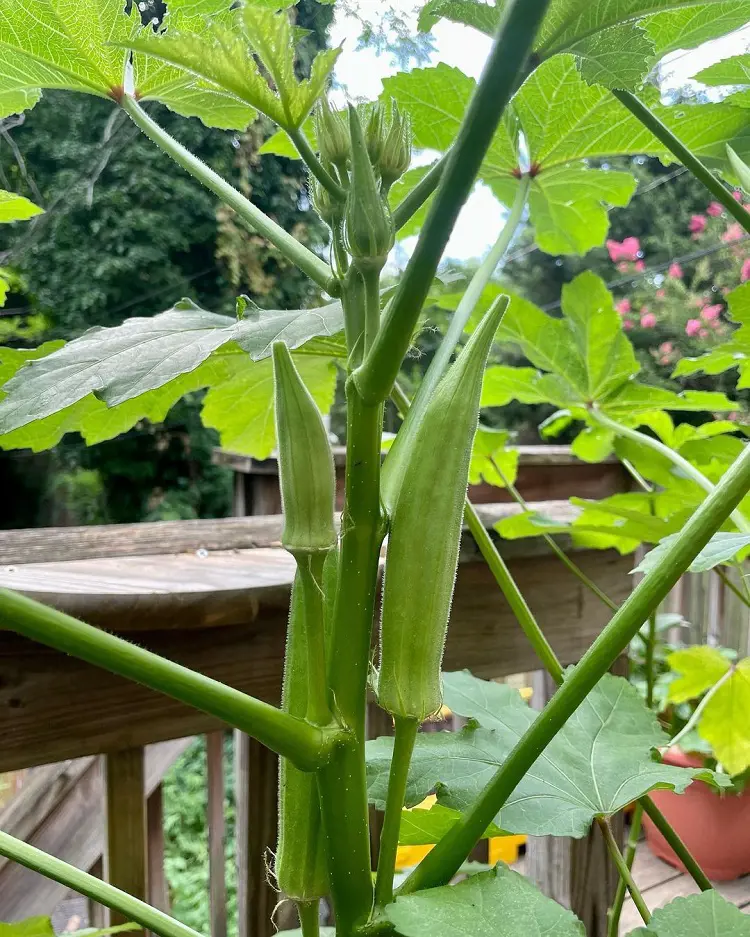
Switch things up in your garden! Instead of planting the same thing in the same spot every time, try rotating your crops. This means moving where you plant your okra and other veggies each season. Why? Because it helps stop icky diseases that live in the soil from bothering your plants.
By changing their spots, you keep the soil healthy and make it tough for those pesky diseases to stick around. It's like giving your garden a fresh start each season, keeping everything happy and thriving.
15. Save Seeds
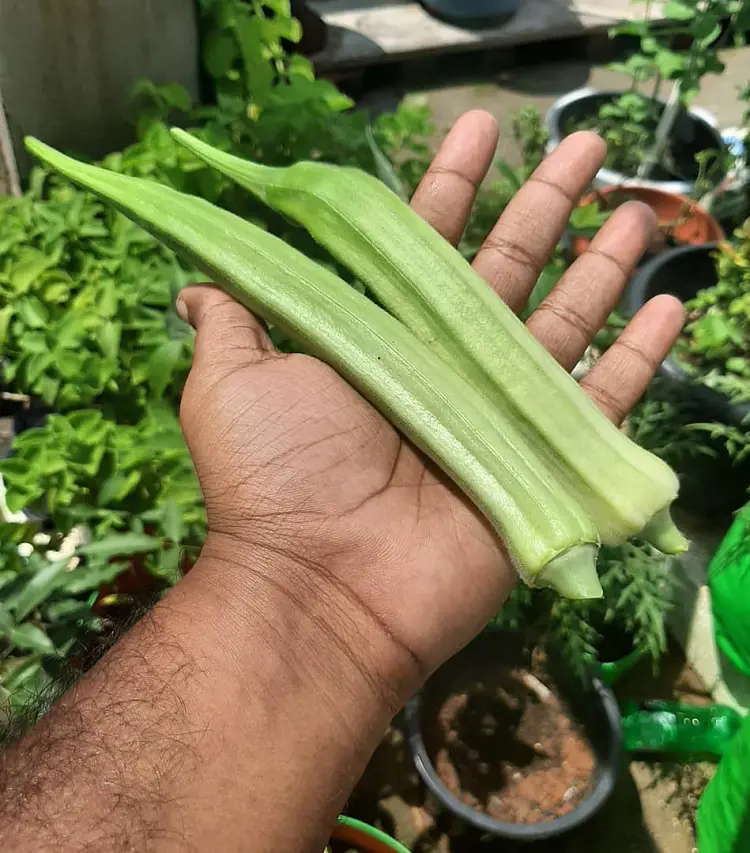
Planning to grow more okra next year? Here's a cool trick: let some okra pods on your plant grow big and dry. When they're all dried up, you can collect the seeds inside. These seeds are like magic beans for your garden, they hold the power to grow new okra plants.
So, instead of buying seeds, you can use your own. It's like saving a little piece of this year's garden to make next year's garden even better. Just wait for the pods to dry, gather the seeds, and you're all set for a new batch of tasty okras in the next growing season.
How Long Does It Take To Grow Okra?
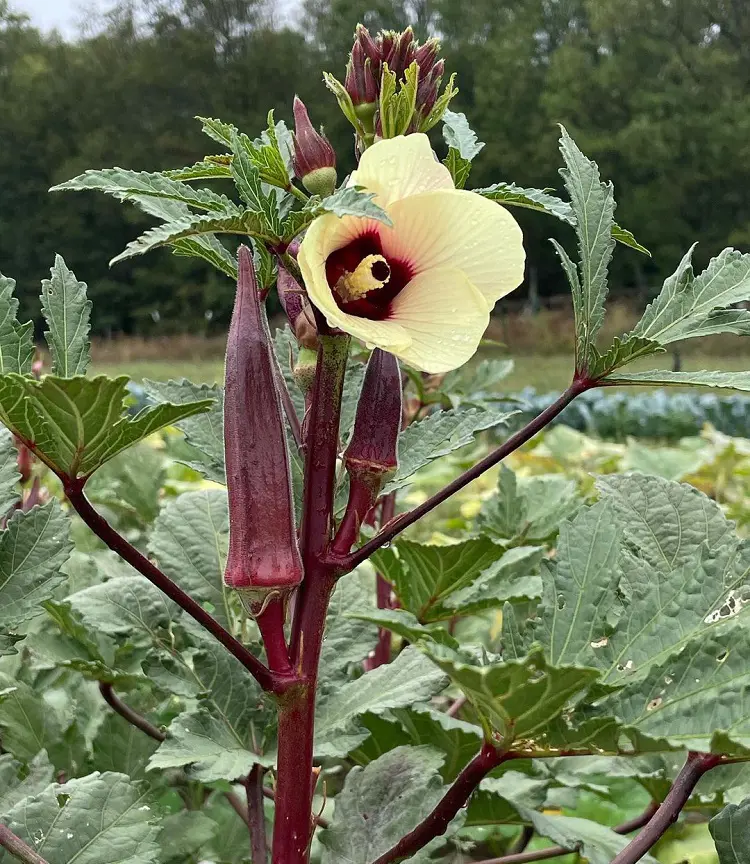
Okra typically takes around 50 to 65 days from planting to harvest, depending on the variety and growing conditions. The exact time can vary based on factors such as temperature, sunlight, and soil quality. Warmer temperatures and optimal growing conditions tend to expedite the growth process.
It's important to monitor the size of the okra pods for harvesting; picking them when they are about 2-3 inches long ensures the best flavor and tenderness. Regular harvesting promotes continuous production, as okra plants can continue to produce throughout the growing season.
Growing Problem Of Okra
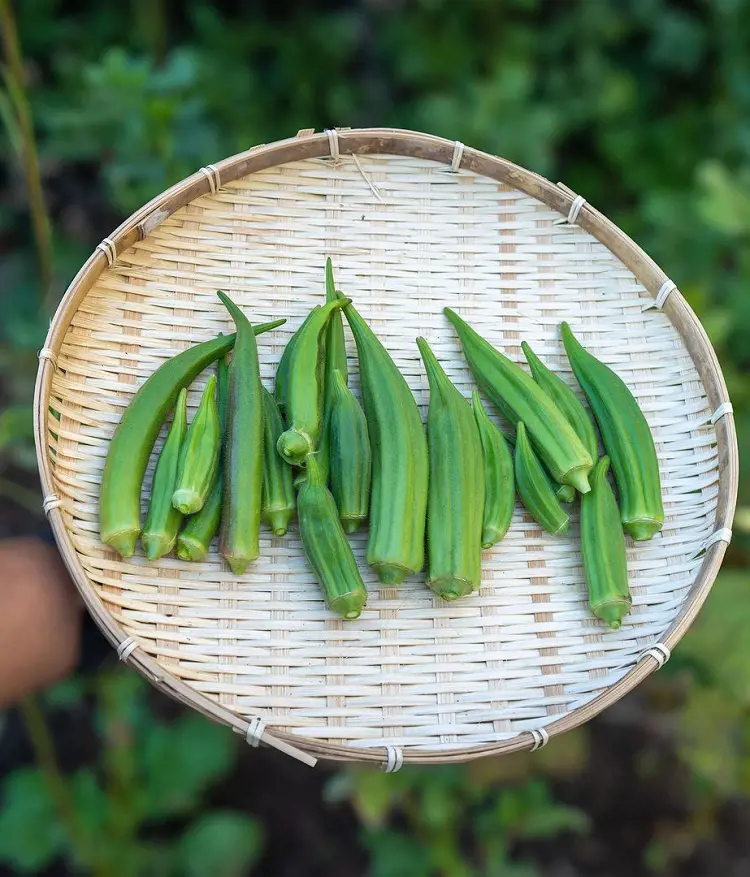
Some growing problems of okra are:
- Pest Infestations: Aphids, spider mites, and other pests can attack okra plants, affecting their health and reducing yields.
- Disease Susceptibility: Okra is prone to fungal diseases such as powdery mildew and verticillium wilt, particularly in humid conditions.
- Waterlogged Soil: Poor drainage can lead to waterlogged soil, causing root suffocation, nutrient deficiencies, and overall stunted growth.
- Nitrogen Imbalance: Excessive nitrogen in the soil can hinder okra fruit production, as it may encourage excessive leafy growth at the expense of pod development.
- Weather Sensitivity: Okra is sensitive to cold temperatures. Planting too early or exposure to late spring frosts can stunt growth and affect overall plant health.
Recent posts
How To Grow
How To Grow
How To Plant, Grow And Harvest Corn All By Yourself
Growing your popcorn or sweet corn at home garden can seem like an interesting idea. However, it requires a large amount of space to grow as it is a tall plant that needs plenty of room to spread out. But, if you want to enjoy freshly popped po...
How To Grow
How To Plant, Grow And Care Cucumbers
Growing cucumbers is like going on a fun journey where you get to plant and pick your very own crunchy veggies. It's not just about having tasty cucumbers, it's also about the joy of seeing your plants grow. Whether you have a big garden or a small b...
